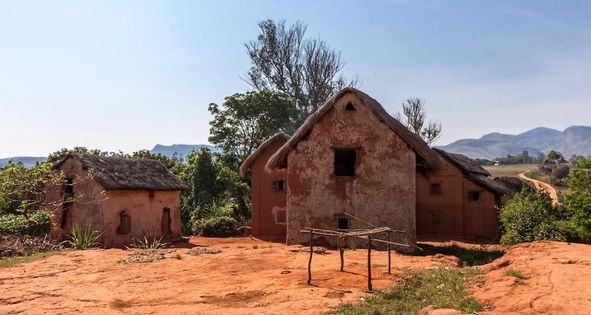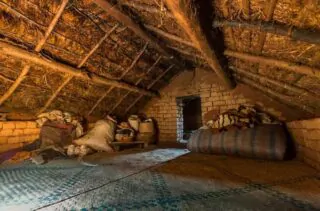Rural life in Madagascar is a harmonious blend of ancestral traditions and adaptation to an exceptional natural environment. The inhabitants of the countryside live in symbiosis with their surroundings, in houses they build using local materials such as bamboo, baked clay, and wood. These homes, which blend seamlessly into the landscape, withstand the whims of the climate and promote natural ventilation thanks to their ingenious design.
The Central Role of Agriculture
At the heart of rural life in Madagascar, agriculture shapes daily routines and cultural identity. From dawn, villagers work in the fields, cultivating crops such as rice, corn, and cassava. Corn, in particular, holds a predominant place as both a source of sustenance and a cultural symbol. Farmers use traditional techniques passed down through generations, allowing them to adapt to climatic challenges and preserve soil fertility.
Granaries: Symbols of Rural Life in Madagascar
Granaries, or vato, are indispensable in rural Madagascar. These elevated wooden structures protect harvests from weather and pests, ensuring food security for families. Artisans build granaries using ancestral know-how. They also serve as gathering places where villagers share stories and traditions.
Corn: A Staple Crop
Corn is a staple crop in rural Madagascar. It is consumed in various forms, making it vital for local nutrition and the economy. Farmers use traditional methods such as crop rotation and cover crops to grow corn in harmony with the seasons and natural cycles. Manual harvesting and storage in granaries ensure the quality and availability of this precious resource, despite the constant challenges posed by climate variations.
The Economic and Social Importance of Houses and Granaries
Rural houses and granaries play a significant role in the economic and social fabric of communities. They are not just physical structures but also living symbols of rural life in Madagascar. Houses serve as welcoming homes and hubs of exchange, where families gather and share the day’s events. Granaries foster solidarity by enabling resource sharing, especially during times of scarcity. These elements strengthen social cohesion and are essential for addressing economic and environmental challenges.
Faced with rapid urbanization and economic changes, rural communities use these traditions to maintain their identity. They integrate sustainable innovations while preserving ancestral practices that define rural life in Madagascar. Local initiatives to promote traditional houses and granaries contribute to sustainable development and reinforce the central role of these structures in society.
Conclusion
Rural life in Madagascar, rich in traditions and community ties, remains a pillar of the nation. It offers not only a lesson in sustainability but also a model of social cohesion that deserves to be celebrated and preserved.
Gaël Rakotovao, a research and operations engineer with a degree from the École Supérieure Polytechnique d’Antananarivo and currently CTO at Mada Creative Agency, is also a passionate photographer specializing in Malagasy landscapes, culture, and cuisine. He brings together over 13 years of experience in digital marketing, SEO, training (SEO, photography, crypto-mining), and he also serves as a ministry-certified tourist guide around Madagascar.



